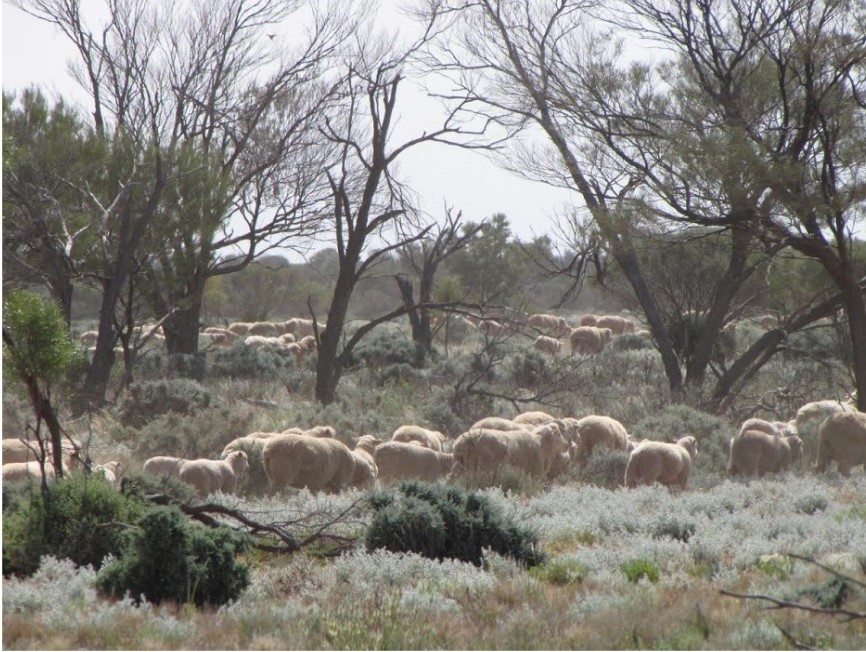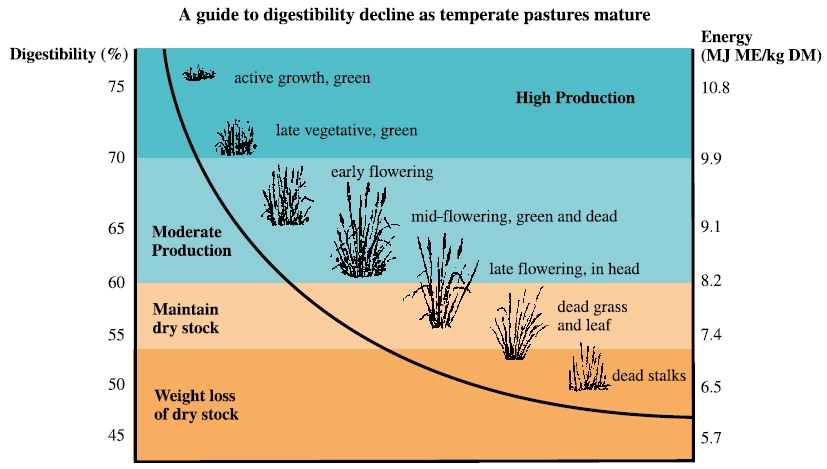Managing livestock nutrition in the rangelands
 PRODUCTION ADVICE - DECEMBER 2021 - AGRONOMY
PRODUCTION ADVICE - DECEMBER 2021 - AGRONOMY
By Adrian Smith
Senior Land Services Officer - Mixed Farming Systems
P: 03 5881 9900 | M: 0447 778 515 | E: adrian.smith@lls.nsw.gov.au
 The semi-arid rangelands of the west of the Murray region are vast areas predominantly grazed by sheep – with cattle, goats and kangaroos also foraging on the fertile plains.
The semi-arid rangelands of the west of the Murray region are vast areas predominantly grazed by sheep – with cattle, goats and kangaroos also foraging on the fertile plains.
These lands contain a mix of native and introduced species, annuals and perennials, shrubs, grasses and forbs, and have a diversity of species only truly appreciated by those who live and work in these areas. They are highly variable, with pasture production being driven by rainfall – whenever that occurs!
This article from November 2020 explains the challenges that farmers in these areas face and outlines a strategic and tactical approach to grazing.
Here, we’ll expand on that advice.
Three critical factors graziers should be familiar with are:
Know the quality and quantity of feed that is available
You should assess the amount of dry matter in individual paddocks and obtain an analysis of the quality of the pasture through feed tests. This should be done during the different seasons. Key factors to measure are dry matter (DM), the digestibility of the feed (DMD), metabolisable energy (ME), crude protein (CP) and neutral detergent fibre (NDF). Figure 1 below shows how digestibility and energy levels of temperature pastures change with advancing maturity.

Figure 1. Digestibility and Energy Declines with pasture maturity. Source: Prograze Manual, 2017
Understand the nutritional requirements of your various classes of livestock
The nutritional needs of your livestock will vary considerably depending on whether they are growing, lactating, reproducing, their base bodyweight and/or pregnancy status. For example, a dry ewe will need around 8 megajoules of metabolisable energy/day (MJ ME/d), whereas a lactating ewe with twins will require over 26 MJ ME/d.
Know the composition of your pastures
Rangeland pastures can be quite complex and contain a range of annual and perennial species, both introduced and native. It is this diversity that makes the rangelands so resilient and productive under the right conditions. Knowing what you have ‘on ground’ is important in understanding the quantity and quality of feed you have available, and how then to manage the pasture.
For example, barley grass and ryegrass will be the major contributors to pasture production in the early spring, whereas the native perennials such as windmill grass, wallaby grass, copperburr and the saltbushes will contribute most to growth over the summer (especially in response to summer rainfall).
Within the rangelands environment, animal production over the entire year is driven (and indeed maximised) by the functional complexity of the pastures your livestock are grazing.
What are some of the key management strategies producers can adopt?
To meet your livestock’s nutritional requirements (both short- and long-term) from rangelands pastures, there are several key strategies to consider.
1. Manage your pastures to maintain (and improve) the diversity of species.
- Adiverse range of forbs, grasses and shrubs (both annual and perennial) will respond to rainfall at any time.
- Manage your pastures to encourage recruitment of desirable species. Sheep are fantastic at grazing out the most desirable species, so it’s important to allow paddocks to rest at critical times to allow for recruitment.
2. Condition score your livestock
- Visually determining the condition of sheep with a reasonable fleece is impossible, so it’s important to manually condition-score sheep to determine their body condition. This allows you to allocate different feeds to different animals, depending on their condition and nutritional requirements. Importantly, it allows you to see if-and-when there is a change in body condition, so that you can make any necessary changes.
- It is well recognised that ewes in a higher condition score at joining conceive more and heavier lambs that are more likely to survive, and which then perform better over their lifetime.
- For young, growing animals, weight is a better indicator of nutritional status than condition score, so weigh young stock to determine growth rates.
3. Scanning ewes
- This allows allocation of different pasture as required by the ewe’s pregnancy status – i.e.. allocating your best feed to ewes bearing multiples, lesser quality feeds to those with singles, etc.
- This can lead to improved overall flock fertility and allows you to cull dry ewes.
4. Containment feeding
- Containment feeding is a practical option when pasture conditions don’t meet livestock nutritional requirements.
- It is well documented that containment feeding can save supplementary feeding costs, labour costs, and enables you to provide better quality water to your livestock.
- It also helps to maintain groundcover across the entire property, allows quicker pasture recovery in response to rain and helps to maintain those more desirable species in your pastures.
There are many great resources available to producers who seek to improve the condition of both their livestock and rangelands pastures. Apart from talking with other producers, there are workshops on tactical grazing management and lifetime ewe management, which can provide producers with a range of tools, information and ongoing support. A good place to start is to get a copy of the ‘Glovebox guide to tactical grazing management for the semi-arid woodlands’ – it is a really practical guide to help producers in making (and implementing) grazing management decisions.
If you’re interested in finding out more about managing your rangelands, or wish to take part in one of the workshops, please contact Adrian Smith at the Deniliquin office of Murray Local Land Services – ph: 03 5881 9900.